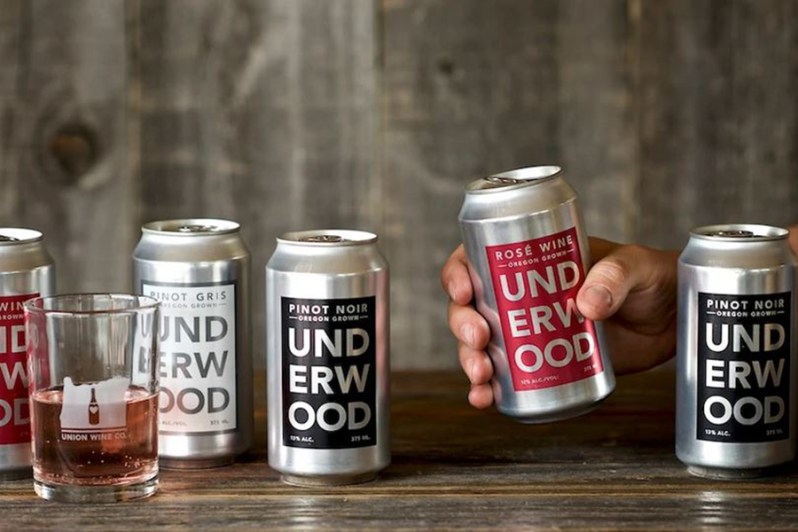If you haven’t heard of canned wine yet, you’ve been living under a very large rock. It’s the fastest-growing thing in contemporary wine and injects the sometimes stagnant industry with portability, frugality, and a bit of hipness.
Union Wine Company in Oregon is all-in when it comes to the crushable wine movement. They recently moved into a 43,000-square-foot space, armed with both bottling and canning lines. Presently, it’s the most automated and efficient facility in the American canned wine realm. It’s turning out roughly 650 cans per minute in an effort to keep pace with a genre of drinks that experienced growth of close to 70% in 2018.
“The new facility has allowed us the ability to easily move between bottling and canning,” says Ryan Harms, Union’s founder and owner. That’s doubly important for his outfit, which puts some wine to bottle and cans the rest (under the Underwood, Kings Ridge, and Alchemist monikers). “In the first six months of this year, we’ve packaged 350,000 cases of wine, which is more than we packaged in the entirety of 2018.”

Union helped spearhead a genre of wines that now includes dozens of producers from coast to coast. Taking on its own production line was a matter of scale. They are officially the largest producer in Oregon and will extend that lead ahead of the likes of A to Z Wineworks and Willamette Valley Vineyards courtesy of their new space.
Meanwhile, other producers are canning lesser amounts or look to bring in services like Tinman or Iron Heart for specialty packaging. The fact that Union has taken on the entire process from bud-break in the vineyard to sealing the wine in aluminum speaks to their faith in the next generation of wine. Expect to see more and more of the stuff everywhere from your local supermarket to your local soccer stadium.
Of course, there are other arguments in the movement’s favor. The environmental impact is less harsh than the traditional glass-and-cork route. Moreover, the decrease in weight (thanks to a greater ratio of wine-to-packaging) makes shipping more efficient. Also, in a more subtle way, canned wine echoes the increasingly thirsty younger wine audience, eager for something less traditional that’s likely collecting dust in some musty cellar.

While canned wine is currently enjoying an extended moment, the stuff has been around for quite a while. The domestic version first came about in California in the 1930s. The Europeans have been doing it for decades, eager for something that could more easily accompany a picnic in the park or trek into a town square. For sparkling, it’s been popular for some time, a sort of grown-up sibling of soda pop.
But the growth we’ve seen in the last few years has been astonishing and suggests that more and better wine — along with a greater number of varietials — will end up in hand kegs. It’s all part of taking wine to less expected places; plucking it from conventional tasting rooms and wine bars and shipping it out to nature trails, paddle rides, and backcountry campsites.
Just remember to pack it out.


